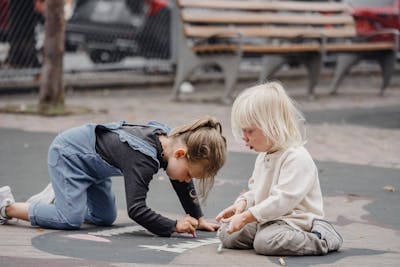In a world where visual content reigns supreme, the term “kawaii” has become synonymous with all things cute and charming. Originating from Japan, the word “kawaii” embodies a cultural phenomenon that extends far beyond its linguistic boundaries. It represents a style that is irresistibly adorable, often characterized by bright colors, simplistic designs, and a sense of playful innocence. In this comprehensive guide, we will explore the world of kawaii pictures, from their origins and impact to practical tips on how to create your own kawaii art that will captivate audiences and elevate your creative projects.
Understanding the Origins of Kawaii Culture
The concept of kawaii is deeply rooted in Japanese culture, tracing its origins back to the 1970s. Initially emerging as a trend among teenage girls, kawaii quickly spread across different age groups and demographics, becoming a significant part of Japanese popular culture. It is associated with cuteness, innocence, and a sense of wonder that resonates with both children and adults alike. Kawaii culture is reflected in various forms, from fashion and toys to art and even everyday objects, creating a unique aesthetic that blends simplicity with charm.
The Evolution of Kawaii Aesthetics
The evolution of kawaii aesthetics can be attributed to several factors, including the influence of manga (Japanese comics) and anime. Characters with large eyes, exaggerated expressions, and simplistic features became icons of the kawaii style, appealing to a wide audience for their relatability and emotional expressiveness. Brands like Sanrio, creators of the beloved Hello Kitty, played a pivotal role in shaping the global perception of kawaii by commercializing this aesthetic and integrating it into everyday products. Over time, kawaii evolved beyond Japan’s borders, becoming a global phenomenon that influences various industries, including fashion, technology, and entertainment.
Key Elements of Kawaii Pictures
To create effective kawaii pictures, it is essential to understand the key elements that define this unique style. Here are some characteristics that are commonly associated with kawaii imagery:
1. Soft and Bright Color Palettes
Kawaii pictures often feature soft pastel colors or bright, eye-catching hues that evoke feelings of happiness and positivity. Think of colors like baby pink, sky blue, mint green, and sunshine yellow. These colors are used to create a cheerful and inviting atmosphere, which is a hallmark of kawaii art.
2. Simplistic and Rounded Shapes
One of the defining features of kawaii art is its use of simple, rounded shapes. This simplicity adds to the charm and accessibility of the images, making them easily recognizable and universally appealing. Rounded edges and minimalistic designs convey a sense of softness and friendliness, making the viewer feel at ease.
3. Exaggerated Facial Features
Exaggerated facial features, such as large eyes and small mouths, are a staple of kawaii art. These features are designed to convey a wide range of emotions, from joy and excitement to sadness and surprise, often in an exaggerated manner that heightens the visual impact and emotional resonance of the image.
4. Emphasis on Innocence and Playfulness
Kawaii pictures often emphasize themes of innocence, playfulness, and youth. This can be seen in the portrayal of characters with childlike expressions, engaging in whimsical activities, or surrounded by objects that evoke a sense of nostalgia and wonder.
How to Create Your Own Kawaii Pictures
Creating your own kawaii pictures can be a fun and rewarding experience. Whether you are an aspiring artist, a graphic designer, or simply a fan of the kawaii aesthetic, here are some practical tips to help you get started:
1. Start with a Sketch
Begin your kawaii creation process by sketching out your ideas. Use simple shapes like circles and ovals to outline the basic forms of your characters or objects. Keep your designs minimalistic, avoiding too much detail, which can detract from the overall cuteness.
2. Choose a Cute Subject
Select a subject that naturally lends itself to the kawaii style. Animals, food, and everyday objects are popular choices. You can kawaii-fy almost anything by giving it a cute face and an adorable expression. Think of a slice of bread with a smile, a sleepy kitten, or a happy cloud.
3. Use Soft, Pastel Colors
Opt for a soft color palette to enhance the cuteness of your image. Pastel colors are particularly effective in kawaii art as they add a sense of lightness and joy. Experiment with different color combinations to find the perfect balance for your creation.
4. Add Exaggerated Facial Features
Give your characters large eyes, small noses, and tiny mouths to amplify their cuteness. Play around with different facial expressions to convey a range of emotions. Remember, the goal is to evoke a sense of innocence and playfulness.
5. Keep It Simple
Simplicity is key in kawaii art. Avoid overcomplicating your designs with too many details or intricate patterns. Focus on the core elements that make your subject cute and endearing. The simpler the design, the more effective it will be in conveying the kawaii aesthetic.
The Impact of Kawaii Pictures on Social Media
Kawaii pictures have a powerful impact on social media, where visuals are a dominant form of communication. The cute and eye-catching nature of kawaii art makes it highly shareable, increasing engagement rates and expanding audience reach. Brands and influencers often leverage kawaii aesthetics to connect with younger audiences and create a sense of fun and positivity around their content.
1. Increasing Engagement with Kawaii Content
Posts featuring kawaii images tend to receive higher engagement rates, including likes, shares, and comments. The playful and lighthearted nature of kawaii art encourages interaction, making it an effective tool for building community and fostering a positive brand image.
2. Building Brand Identity
Brands that incorporate kawaii elements into their visual identity can stand out in a crowded market. The unique and memorable nature of kawaii art helps create a distinct brand personality that resonates with audiences and fosters brand loyalty.
3. Enhancing User Experience
Kawaii pictures can also enhance user experience by adding an element of fun and delight to digital platforms. Whether used in app design, website graphics, or social media campaigns, kawaii art can create a more engaging and enjoyable experience for users, encouraging longer interaction times and repeat visits.
The Global Influence of Kawaii Art
While kawaii originated in Japan, its influence has spread globally, affecting various aspects of popular culture, design, and branding. Countries around the world have embraced the kawaii aesthetic, integrating it into local art styles and adapting it to different cultural contexts.
1. Kawaii in Western Pop Culture
In Western pop culture, kawaii elements are often seen in fashion, accessories, and digital media. Celebrities and influencers frequently sport kawaii-inspired clothing and accessories, while digital platforms feature kawaii-themed emojis and stickers to enhance communication.
2. The Role of Kawaii in Fashion and Design
The fashion industry has been significantly influenced by kawaii, with designers creating collections that feature pastel colors, playful patterns, and oversized, cozy silhouettes that evoke a sense of comfort and cuteness. Similarly, interior design has seen a rise in kawaii-inspired decor, characterized by soft colors, plush textures, and whimsical details.
3. Kawaii in Digital Art and Animation
Digital artists and animators have also embraced kawaii, using its distinctive style to create charming characters and engaging narratives. Kawaii art is particularly popular in indie game development, where its simplicity and charm can enhance storytelling and gameplay experience.
Conclusion
Kawaii pictures are more than just cute images; they are a powerful cultural phenomenon that continues to captivate people around the world. By understanding the key elements of kawaii art and applying them to your own creations, you can tap into this unique aesthetic to enhance your creative projects, build a strong brand identity, and engage with audiences on a deeper level. Whether you are a seasoned artist or a beginner, the world of kawaii offers endless possibilities for creative expression.




